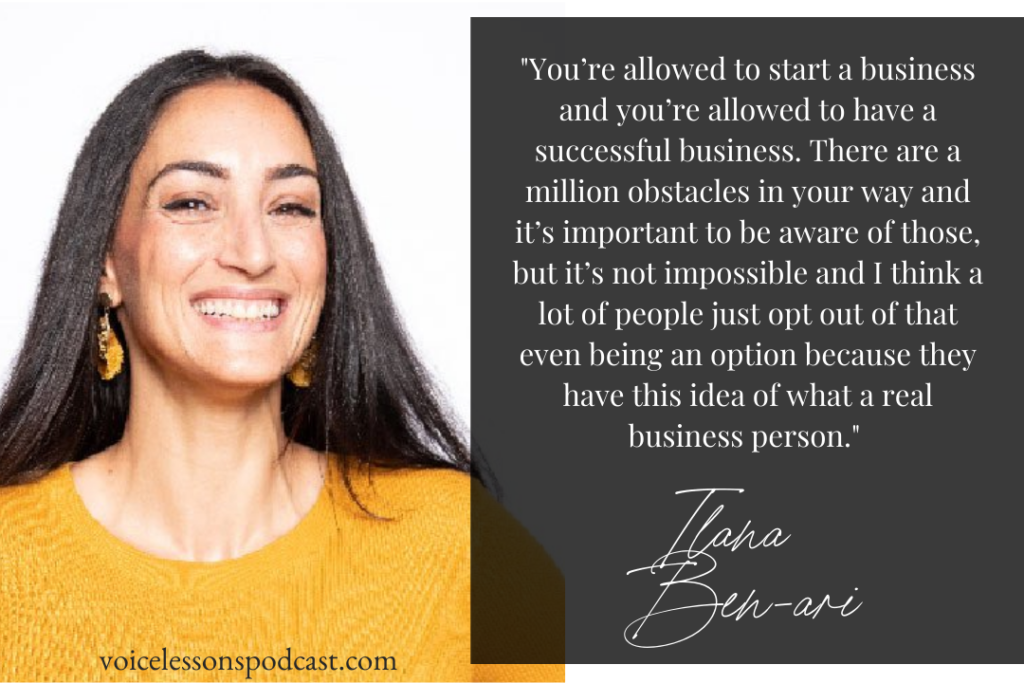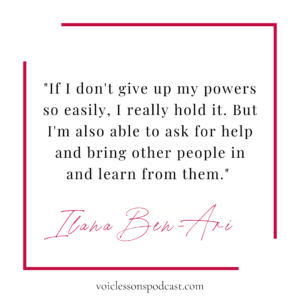A Lesson on Escalating Dares with Ilana Ben-Ari
Where does creativity come from? And how do creatives, especially women, tackle failure? Ilana Ben-Ari talks about how she turned her creative vision into a business, despite the stigma that women and creatives are limited to just coming up with ideas. Why stop at invention, when you can build your own business?
Where does creativity come from? And how do creatives, especially women, tackle failure? In this “lesson on escalating dares”, Ilana Ben-Ari talks about how she turned her creative vision into a business, despite the stigma that women and creatives are limited to just coming up with ideas. Why stop at invention, when you can build your own business? Find out how to tackle the fear of failure and use playful creativity and bootstrapping efforts to build something you can truly be passionate about.

LISTEN: APPLE PODCASTS | STITCHER | SPOTIFY
TOPICS DISCUSSED IN THIS EPISODE:
- How to take the leap and start your own business
- Can designers be business owners?
- Risk tolerance and how it plays a role in predicting economic, social and personality outcomes among women
- Failure and how the notion of failure directly impacts women’s’ decisions for their future
- Negative gender stereotypes in the workforce today
- Why perfection shouldn’t hold you back
- The difference between running a business and maintaining a business
- How to nurture your creative gifts
- Creative women and the notion of feminine leadership
#LESSONUP:
(10:20) A massive new study of over a million people from 23andMe suggests that genetics makes some people more willing to take risks. More important than that though is that the research shows that environmental, demographic and of course cultural circumstances play a much more significant role in determining risk tolerance.
(11:24) High -achieving women in particular derive less confidence from positive feedback than men at the same caliber and negative feedback takes a greater emotional toll. From a cultural standpoint, when women are put in situations where they are aware of negative stereotypes about their gender, they become even more anxious about feeling and proving those stereotypes right.
(14:19 ) Calendar your creativity, calendar the blocks where you can have space because we need space as creatives to receive ideas. Now a lot of people will push back on that. I can’t schedule my creativity and I’m like, yes, you can. Especially if you’re running a business. It’s part of your process and part of your creative discipline. You were given these gifts and so you have to nurture them in a certain way.
(16:06) My thinking and the reason why the failure toy exists is so that we can just start talking about all the nuances of what we feel like when we talk about failure and what does failure mean? Failure can only exist if we have the definition of success and that’s all posts can move. When you introduce competition, when you introduce new people, literally the context of the room, you can feel like you’re winning in one room and you’re failing in another room. The spectrum of just human beings and how we respond to risk and competition and blame and all of those things. But also there’s a spectrum to failure.
(17:34) Failure is simply the emission of required or expected action. It’s not predictable, not boring. Failure can be a fluke. It’s a pattern interrupt and sometimes it can be done right miraculous. Case in point, like these inventions that were made by mistake penicillin, the Slinky, post-it note, popsicles, the pacemaker and my favorite color mauve. Failure is not what you’re looking for when you accept what is, but it will allow you to see.
(18:41) There’s so much that we can do if we … definitely, as a woman, if I don’t give up my power so easily, I really hold it. But I’m also able to ask for help and bring other people in and learn from them.
(19:25) So I think that there’s so much that we can actually accomplish and the biggest shift, I think the first step is just the mindset. You’re allowed to start a business and you’re allowed to have a successful business. There’s a million obstacles in your way and it’s important to be aware of those, but it’s not impossible and I think a lot of people just opt out of that even being an option because they have this idea of what a real business person is.
(22:15) So I would say as a toy designer, I live in the world of contradictions and friction and the idea that you’re holding multiple truths at the same time and how they butt up against each other is where get creativity. I really believe the greatest creatives are the ones that can hold multiple truths and multiple energies at the same time and it’s the friction that they create that leads to some really exciting inventions.
(23:38) Designing a business is one of the most fascinating, exciting, interesting things to do and I think the majority of designers that exist, I don’t know if they call themselves social entrepreneurs, but really true good designers search for the right problem so they don’t … our whole mantra is that you don’t find a solution, you don’t jump into the solution and go, this is what everybody wants and then sell and market it. You are constantly searching for the right problem and you’re working towards the problem and really good design is human centered.
RESOURCES:
MORE FROM ILANA BEN-ARI:
PIN IT:

